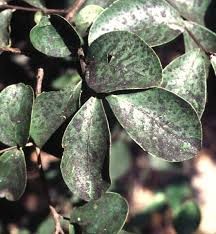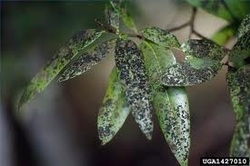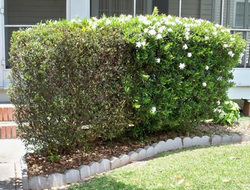By mid-to-late summer, I usually receive numerous calls from concerned homeowners regarding a variety of plants such as crape myrtles, gardenias, citrus, tomatoes, camellias, and pecans that have leaves covered with a crusty black substance. The complaint often describes leaves yellowing or dropping and the plant appears to be dying. This black crusty substance is called sooty mold and is very common, especially during the summer months.



Happy Gardening!!!Gerald P. Roberts

 RSS Feed
RSS Feed